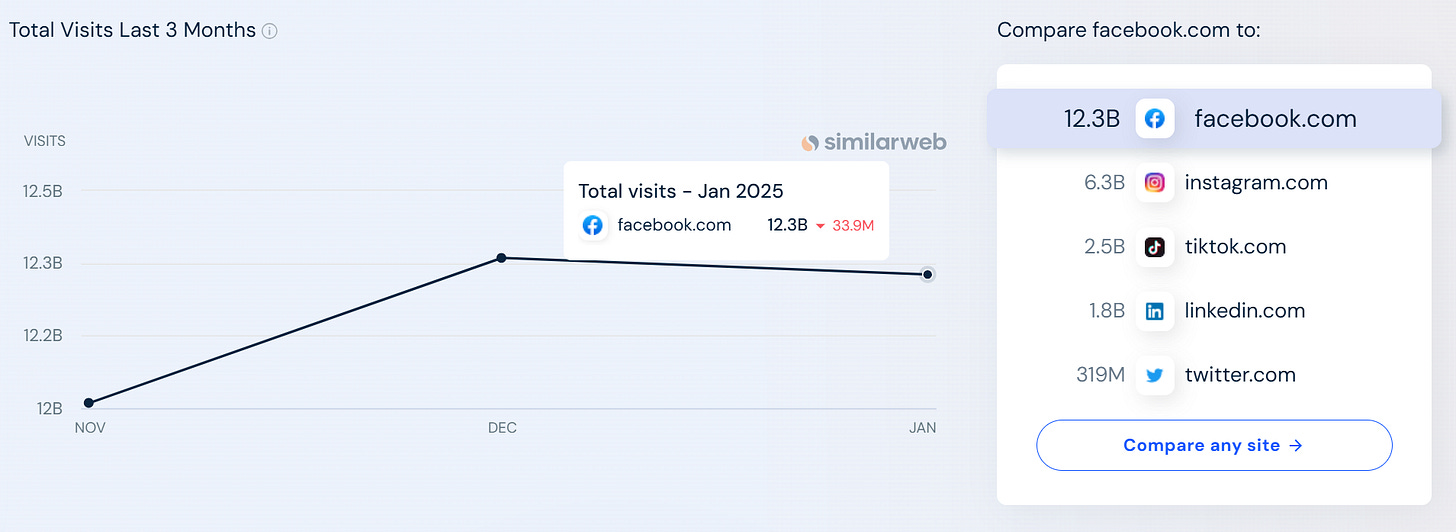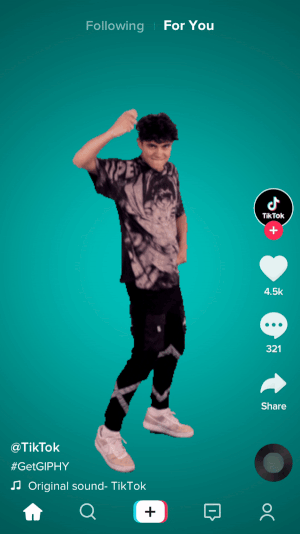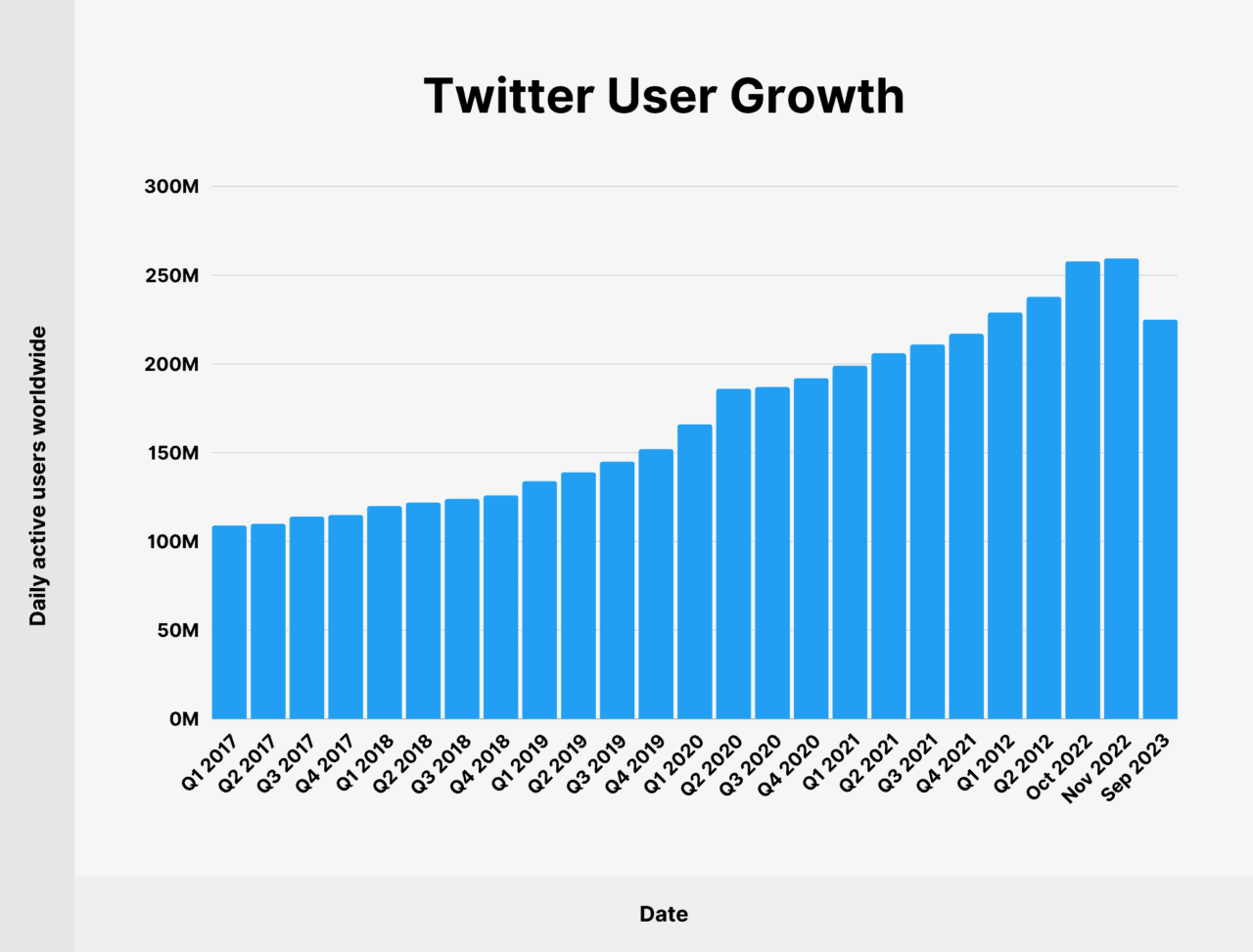Social Networks in 2025: Overview, Engagement, FOMO, and Real Value
In 2025, social media hasn’t gotten less chaotic. In fact, it’s more tangled and messy, with the lines between real interaction and algorithm-fed engagement blurring more than ever.
Over the years, social networks have evolved, devolved, and in some cases, turned into a parody of their former selves. As a marketer who’s been riding this wave for over 25 years, I find myself looking at these platforms with a mix of familiarity, skepticism, and, yes, a fair bit of disdain.
Why disdain, you ask? Because, despite the new features, shiny bells and whistles, and the relentless pursuit of “engagement,” the core mechanics remain unchanged. It’s still about getting people’s eyeballs, and it’s still about turning them into numbers on a dashboard. But the tricks we used to get those numbers keep evolving, and it’s our job to keep up—or get left behind.
So, here we are in a world where social networks are still relevant, powerful, and pulling the strings of our marketing budgets. We’re about to explore the current landscape of social media and what it means for digital marketing in 2025.
Overview of social networks and digital marketing in 2025
Let’s start with the basics—social media is still here, dictating how we connect, share, and advertise. But it’s different now. Gone are the days when simply having a Facebook page or tweeting a few times a week was enough to get your business noticed. Today, each platform has become a specific tool for a specific purpose—some are visual scrapbooks, others are instant messaging giants, and then there are the ones that want to be everything, everywhere, and all at once.
Facebook’s largest demographic is people aged 25-34, who joined back when it was still cool and stayed because they never really felt the need to move on (source). Instagram remains a visual brag board of influencers selling lifestyles and products, while its little sibling Threads is attempting to give Twitter (or X, as it's rebranded) a run for its money.
TikTok is the darling of Gen Z, a flashing montage of dance moves, lip-syncs, and occasionally some clever marketing that actually works. Surprisingly, LinkedIn has found its moment in the sun, being the adult of social networks, where conversations (mostly) stay civil, and the content feels at least semi-authentic.
For marketers, this diversity of platforms means there’s no one-size-fits-all strategy anymore. Every platform has its quirks, its algorithms, and its audience expectations. The game is about figuring out which combination of networks fits your brand best, where your customers are most likely to hang out—and, crucially, which ones they actually engage with.
The FOMO factor
Then there is Fear of Missing Out—the notorious FOMO—still alive and well in social media. It's a powerful motivator, and platforms know it. They thrive on it. Social media adoption is not just about finding value or staying connected; it’s also about avoiding the uncomfortable feeling of being left out. Missing a trend, being unaware of the latest viral sensation, or failing to post your opinion on the “hot topic”—all of these fuel the need to stay plugged in.
It is a double-edged sword. On one hand, it means people are still logging in, scrolling, and looking for content that makes them feel part of something bigger. On the other hand, it means we’re constantly chasing the next big thing. We have to decide whether to jump on the latest platform that promises “better engagement” or stick to the tried and true, even if it feels like we’re just going through the motions.
Think about Bluesky, Mastodon, or even Threads. Each new network claims to solve the problems of its predecessors while creating its own cult of exclusivity. As a marketer, I joined these new platforms, not necessarily because I see the value in them yet, but because—heaven forbid—I don’t want to be left behind if they catch on. It’s marketing FOMO, and I am just as susceptible as everyone else.
What’s fascinating is that this FOMO-driven adoption isn’t just about platforms but also content types. Remember when Stories on Facebook became a thing, and everyone had to have them? Now it’s Reels, Shorts, and whatever next three-second attention-grabbing medium will come.
FOMO pushes both individuals and brands to adapt, to post, to be there, even if we’re not entirely sure why we’re doing it. It’s about keeping up appearances, staying relevant, and making sure we’re not left in the dust of yesterday’s algorithm.
And so, as we step into 2025.
Platform-specific analysis
Let’s (finally) take a deeper dive into some of the major platforms that will undoubtedly continue to dominate the social media landscape in 2025. Each platform has its unique audience, engagement patterns, and strengths—understanding these nuances is key if you want to make an impact.
Facebook
Facebook is still around and has a massive user base, but the shine has worn off. The audience skews older, primarily aged 25-34, and the platform has largely turned into a mix of digital yard sales, family photo albums, and news aggregators. Organic engagement is abysmal—0.11% across all industries (source)—but businesses still maintain a presence because of the sheer volume of users. It’s a platform for ads, not conversation, and for SaaS companies, it’s more about brand visibility than direct lead generation.
Traffic stats source Similar Web.
Instagram
Instagram is still the go-to for visual content. The vibe here is all about aspirational lifestyles, beauty, and curated perfection. Oh, and memes. Brands that rely on aesthetics—fashion, travel, food—continue to thrive, but for SaaS? It’s trickier. The organic reach rate is around 12% (source), which isn’t bad, but you’re competing with influencers whose entire lives are built around gaming the algorithm.
For SaaS companies, Instagram can work to showcase company culture, brand personality, or even customer success stories, but it requires a creative, visually appealing approach. This begs the question, does your SaaS have it?
Image from Sprout Social.
Threads
Threads is Meta’s attempt to recapture the text-based engagement that X (formerly Twitter) once dominated. It’s tied closely to Instagram, making it easy to onboard existing users, but the jury’s still out on whether it will have staying power. For now, it’s a space to experiment with conversational content, but don’t expect miracles in terms of audience growth or engagement—everyone’s still figuring out what to do with it.
WhatsApp and Viber
WhatsApp and Viber continue to be popular if you are about direct communication. These can be effective if you have an established user base and want to deliver updates, offers, or support directly to their phones. For SaaS? Not so much. It’s hard to see a place for these platforms beyond customer support or niche marketing campaigns.
TikTok
No matter the recent US ban, TikTok is still going strong, capturing the attention of Gen Z and beyond. It’s a place where trends are born and die within days, not weeks, and brands can succeed if they’re willing to be creative, quick, and a little silly.
For SaaS, TikTok is a wildcard—it’s not the most intuitive fit, but it can work for those willing to take risks and put a human face on their brand. The key is authenticity—TikTok’s audience sniffs out corporate nonsense a mile away.
X (Twitter)
Most would agree that Twitter/X needs to be fixed. Since Musk took over, the platform has been in flux, with algorithm changes, rebranding, and shifting user demographics. Engagement rates have dropped significantly, and the overall experience has become fragmented. Still, for many, it remains the default for real-time conversation.
For SaaS marketers, X is still worth considering for thought leadership and customer support, but it’s not the powerhouse it once was. Many have already invested a lot of time building an audience there, making it hard to abandon it.
Twitter User Growth by Backlinko.
LinkedIn
LinkedIn has found a new life as a place for professional conversation. Its audience is interested in industry news, professional growth, and business networking. The average organic reach rate is 1.81% (source), which is decent considering the platform’s focus.
For SaaS, LinkedIn is one of the best platforms for brand awareness and lead generation—especially if you’re targeting B2B. It’s where you’ll find decision-makers, and if you’re willing to put in the effort to engage meaningfully, it pays off.
Users flocked to the platform in search of meaningful professional content, industry insights, and networking opportunities. The shift was partly driven by dissatisfaction with the increasingly chaotic nature of platforms like X and the superficiality of Instagram.
LinkedIn capitalized on this by leaning into its strengths—professionalism, thought leadership, and a focus on industry-specific content. The platform rolled out features to encourage more interaction, such as improved post analytics, content creator tools, and better video content support. The result was a more engaged user base that was not just scrolling but actively participating in discussions and seeking value.
Effective strategies for LinkedIn engagement
Engaging on LinkedIn in 2025 is all about adding value. Users on LinkedIn are looking for insights, not sales pitches. The most effective content is informative, thought-provoking, and tailored to your target audience’s professional interests. Here are some strategies that have proven effective:
Thought Leadership Content: Sharing your expertise is one of the best ways to engage on LinkedIn. Posts that provide unique insights, industry analysis, or thought-provoking questions tend to perform well. The goal is to position your brand—and your people—as experts in your field.
Interactive Posts: Polls, questions, and discussion prompts are great for driving engagement. LinkedIn’s audience is more inclined to participate in conversations relevant to their professional lives.
Consistency: Regular posting is key. Unlike platforms like TikTok or Instagram, where virality can happen overnight, LinkedIn rewards consistent, value-driven content. Establishing a regular posting schedule helps build familiarity and trust with your audience.
Video Content: Video is gaining traction on LinkedIn, especially content that simply explains complex topics or offers a behind-the-scenes look at your company. It doesn’t need to be flashy—authenticity trumps high production value on LinkedIn.
Engaging with Others: LinkedIn isn’t just about posting your own content—it’s about engaging with the community. Commenting on others’ posts, sharing relevant articles, and participating in discussions help increase your visibility and establish your brand as an active part of the professional community.
As we navigate 2025, LinkedIn’s emphasis on meaningful, professional content makes it a standout platform for marketers, especially in the B2B space. By focusing on value, authenticity, and community engagement, brands can effectively leverage LinkedIn to build authority and foster connections that drive business growth.
RivalIQ Linkedin Benchmark Report.
Twitter Clones and Alternatives
With the tumultuous changes that X (formerly Twitter) has undergone, several alternative platforms have emerged, each attempting to capture the space left by the original microblogging giant. Threads, Mastodon, Bluesky, and other alternatives have seen varying levels of success, but none have fully managed to replace X.
Mastodon is the most well-known alternative, offering a decentralized social networking approach. Its federated model allows users to create their community's appeals, making it appealing to those who value privacy and control over their data. However, the decentralized nature also means that building an audience is challenging, as users are spread across countless instances. For marketers, Mastodon’s fragmented user base makes it difficult to achieve significant reach, but it can be effective for niche communities that are highly engaged.
Bluesky, backed by former Twitter CEO Jack Dorsey, is another contender. It offers a familiar experience for Twitter users but focuses on decentralization and open standards. Bluesky has managed to attract a tech-savvy audience, but it remains to be seen whether it can scale effectively. For marketers, Bluesky might be a platform to watch, especially for tech-focused brands looking to connect with early adopters.
These alternatives present both opportunities and challenges. The opportunity lies in reaching audiences looking for something different—users who have grown tired of X's chaos and seek a more curated or decentralized experience.
The challenge, however, is that these platforms are still small and fragmented and may not yet provide the kind of reach that brands are accustomed to. The key is to experiment, identify the platforms that align with your brand’s values, and engage authentically with the communities there.
Niche Platforms & Communities
Beyond the major social networks, niche platforms and community spaces have continued to grow in popularity. Platforms like Discord, Slack, and Reddit have evolved into essential hubs for building and engaging with communities, especially for brands in the SaaS and tech spaces.
Discord has become a go-to platform for community building. Initially designed for gamers, it has expanded to include all interest groups, including tech enthusiasts, hobbyists, and brand communities.
For SaaS companies, Discord is particularly effective for creating customer communities—spaces where users can interact with each other, share tips, and get direct support. The real-time nature of Discord makes it an excellent tool for fostering a sense of belonging among users, which in turn can build brand loyalty.
Slack serves a similar purpose, albeit in a more professional context. Many brands use Slack channels to foster communities around their products, particularly in the B2B space. Slack is ideal for creating focused, professional groups where users can discuss industry-specific topics or get support.
Reddit is the ultimate forum on the internet and remains a powerful platform for community engagement. Its strength lies in its vast number of focused subreddits, where users discuss everything from niche hobbies to specific industries.
For marketers, Reddit can be a goldmine of targeted engagement—provided you approach it authentically. Reddit users are notoriously wary of overt marketing, so the key is participating in a genuine, value-adding way. Successful brands on Reddit listen, contribute thoughtfully, and respect the culture of each subreddit.
Personal vs. Professional Use
The dichotomy between personal and professional use of social media platforms has never been more pronounced. Platforms like Instagram and TikTok thrive on personal content—aspirational, entertaining, or just plain fun. These platforms are about creating an image, whether it’s the perfectly curated lifestyle or the latest viral dance trend. For personal users, it’s a way to share, express, and connect more informally.
On the other hand, platforms like LinkedIn have doubled down on professional use. LinkedIn is where users go to showcase their professional achievements, share industry insights, and connect with peers. It’s less about the latest trend and more about establishing thought leadership and building a professional network.
Understanding this dichotomy is crucial. What works on Instagram—flashy visuals and quick entertainment—won’t necessarily work on LinkedIn, where users expect depth, insight, and professional relevance. The key is to tailor your content to match the expectations of the platform’s audience, ensuring that you speak their language, whether playful and engaging or insightful and informative.
Conclusions and Predictions
The Future of Social Networks is about personalization, niche communities, and decentralized control. Users are tired of algorithm-driven feeds that prioritize engagement over quality. They want genuine connections, valuable content, and a sense of belonging. Platforms like Mastodon and Bluesky, which emphasize decentralization, hint at a future where users have more control over their data and the kind of content they see.
For marketers, the challenge will be to navigate this increasingly complex ecosystem. The days of relying on a few major platforms to reach most of your audience are over. Instead, successful marketers must adopt a multi-platform approach, tailoring their strategies to fit each community's unique culture and expectations. It will be about quality over quantity—focusing on creating meaningful, engaging content that resonates with specific audiences rather than trying to go viral across all platforms.
In 2025 and beyond, the brands that succeed will be adaptable, authentic, and community-focused. Social media is no longer just about broadcasting—it’s about listening, engaging, and building lasting relationships. The platforms may change, and the algorithms may shift, but the core of social media—connection—will always remain.











